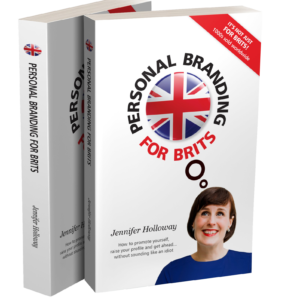

Personal Brand 101 – Part 4
Here we are at the final installment of my Personal Brand 101, a back-to-basics guide aimed at making sure we all know what a personal brand is (check out Part 1) and what goes into one (noted in Part 2 and Part 3 and about to be rounded off in this, Part 4).
All that’s left to be covered are the last two elements of the Personal Brand Pyramid: Skills/Strengths and Image.
SKILLS/STRENGTHS
What they are
There’s a difference between a Skill and a Strength, although both are employed when you deliver your ‘what’. To give you a handy definition…
A Skill is something you weren’t born with. Instead, it’s something you’ve learnt, practised, got very good at and (here’s the litmus test) you could teach someone else to do it to. (Though maybe not as well as you, if it’s a true Skill of yours.)
A Strength is something you were born with, because it stems from something deeper inside you, the seeds of which were planted from birth. It might be the depth to which you hold a Value, or the extent to which you’re motivated by a Driver, or the intensity with which you exhibit a Behaviour.
What to ask yourself to identify it
- What is it that people come to me for help with?
- What is it that comes easily to me that others have said they find hard?
- When I’m in a meeting with others, what comments have been said about how I work or what I deliver?
Examples of Skills/Strengths
Skills
- Forecasting trends
- Identifying cost savings
- Writing concise copy
- Collating data from multiple sources
Streamlining processes - Researching new concepts
Strengths
- Absolute calm in a crisis
- Never giving up
- Intuitive empathy
- Engendering loyalty
- Naturally persuasive
- Creating harmony in a team
Here’s a tip
When you’re thinking about what you excel at, there’s a trap you might fall into, because it’s something nearly every client I’ve worked has done. (Until I showed them how to avoid it.) The trap is thinking that something you consider to be a Skill or Strength is indeed a Skill or Strength. In actual fact, 99 times out of 100 it’ll be an outcome.
As a for instance, when someone says they’re organised, that’s an outcome of something they’ve done; it’s not the the organisation itself that’s important, it’s how they’re organised, what they do to be organised, the actual Skill or Strength that enable them to be organised. By looking at what’s happening before the outcome of the organisation itself, that’s where you’ll find the real Skill or Strength.
IMAGE
What it is
Your Image is your packaging for your personal brand. It’s what you convey in how you look (your clothes, accessories, body language, eye contact), how you sound (your accent, tone, volume, choice of words) and how you act (your behaviour itself). And it doesn’t even have to be delivered in person. Your online presence, such as your LinkedIn profile, is also part of your Image.
Its job is to quickly give people a clear and accurate handle on what and who your personal brand is all about. So when I worked on my own brand and concluded being sassy, savvy and sure were key components, I made certain my Image reflected that. As a result, how I look always includes my trademark red lipstick and nail polish. How I sound is chatty with a lot of humour thrown in (also reflected in how I write). And how I act is confident but still down-to-earth.
What to ask yourself to identify it
- When I get dressed for work, what am I trying to convey with my clothes?
- What clues could someone pick up about me just from looking?
- What words would I use to describe my voice?
Examples of Image
- Classic
- Trendy
- Sharp
- Tailored
- Loud
- Understated
- Co-ordinated
- Natural
Here’s a tip
The whole point of your Image is that the packaging on the outside must reflect what’s inside, so it should be the last thing you address when working on your personal brand.
As an analogy, Kellogg’s has a team that develops new cereals and a team that designs the packaging. The flow of work is always from the former to the latter. (“We’ve designed this cereal that’s low in sugar, high in fibre and great for people who want to eat healthily. Could you design a box that conveys that?”)
What doesn’t happen is that the latter approaches the former. (“We’ve designed this cool box with lots of colourful graphics and quirky typography. Could you create a cereal to put in it?”)
Well…that’s your lot then. The end of my four-part mini-series going back to the basics of personal branding. With that covered, my future posts will resume the business of telling you how to make the most of your brand.
In the meantime, let me know if I’ve explained it all clearly or if there are any muddy patches I’ve yet to clear up. There’s a comment box below for just that.








[…] A client of mine was applying for a job with the drinks firm Red Bull. As part of the application process they asked her to complete an online test, at the end of which popped out a report identifying her greatest strengths. (Which, as you know, are a key component of any personal brand.) […]